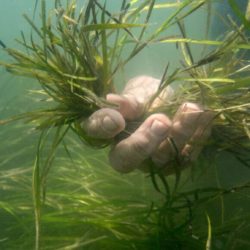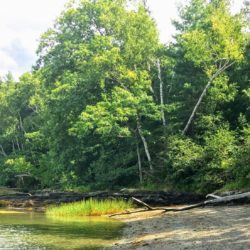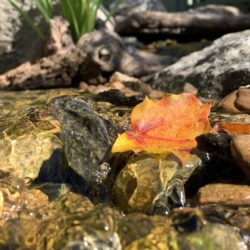A medida que nos acercamos al Día de la Tierra 2021, comparta la lista de pasos ecológicos de ELA con colegas, amigos y familiares. Aquí hay acciones que todos podemos tomar para hacer que nuestros paisajes sean más amigables con la tierra.
Developing Healthy Landscapes
An unhealthy environment should not be the price of a beautiful landscape. Inappropriate plant choices and inadequate soil preparation can lead to a reliance on excessive use of water and on toxic chemicals to resolve problems. Ecological landscaping encourages practices that promote a healthy environment through conservation of resources, respect for biodiversity, and ecologically-sound techniques.
Celebrate Earth Day Every Day – Get Started with these Eco-Actions!
As we approach Earth Day, share ELA’s list of ecological steps colleagues, friends, and family. Here are actions all of us can take to make our landscapes more earth friendly.
Preserving the Body for Occupational Longevity
By Diana Kiesel
The landscaping professions’ seasonal demands will continually challenge one’s ability to balance work, family life, and social obligations, leaving little time for self-care. Let us explore how you can incorporate self-care into your daily life, particularly your work life, for a better tomorrow.
The Human Body Landscape – An Eagle’s Point of View
By Nicole Grant
Gardeners and Landscapers spend hours stewarding the land but often times at the expense of their own bodies. Take time every day to appreciate your hard-working body by practicing some deep breathing and easy yoga stretches to better align your spine and recharge your mind.
The Beauty of Blue Carbon
By Hilary Stevens
Coastal wetlands are a valuable component of our landscape for many reasons. They provide habitat to many species that are important for fisheries and recreation. They reduce wave energy and help mitigate coastal flooding. It turns out that they also help control the rise of greenhouse gases in the atmosphere by trapping carbon dioxide in plants and in soils.
Reconnecting With The Forest
By Dr. Thomas RaShad Easley
How can we reconnect with the forest as well as ourselves, regardless of our community makeup? How can we steward forests as a resource in a neutral manner? We can all find ways to invite others into forested land by looking through a relationship lens rather than a personal ideal lens.
Climate Change and Invasive Species
By Carrie Brown-Lima
Invasive species are on the rise as trade and travel accelerate the introduction and spread of new species in a way never seen before. Simultaneously, our climate is changing at an unprecedented rate resulting in climate extremes. While these two phenomena are each daunting challenge to biodiversity, their impacts can act synergistically and present additional hurdles for conservation and sustainability.
COVID’s Pendulum
By Trevor Smith
Goodbye 2020 and good riddance!!! Though we are not out of the woods yet, I couldn’t help but feel a weight lifted as the ball fell at the stroke of midnight. 2020 started like any other year, with hope and possibility. The anticipation of a new season combined with knowing how crazy things would be in spring felt like I was on a rollercoaster about to hit that big drop. All I could do was hold on as the world rushed past. Little did we know that drop would be less like a rollercoaster and more akin to Niagara Falls.
Update: Plastic Pots Used in the Green Industry
By Marie Chieppo
In 2019, the Association of Professional Landscape Designers (APLD) sustainability committee asked me to research and write about plastic horticultural pots use and disposal methods. Because plastic is so easy to use, billions of plastic pots were being produced without a blueprint for what would happen as demand increased. Unfortunately, we’ve produced so much plastic that we can’t possibly recycle it all.
The Four Laws of Ecology
By Barry Draycott
Last year I found a copy of The Closing Circle, Nature, Man & Technology by ecologist Barry Commoner. I started rereading it and was stunned to find in the first chapter, even before he states the Four Laws of Ecology, Commoner discusses the fundamental interaction of nutrients, humus, soil microbes, plant health, and climate! What is amazing is the book was published in 1971!!
Five Things I Learned This Year
By Cathy Weston
Back in my professional working days, I relished the quiet time around the holidays. I went into the office and used the time to clean and organize files, make a priority list of the next year’s goals, and start my year-end review. Now, as an ecological gardener, I do something similar. I develop next year’s planting projects and reflect on what I have learned on the journey to ecological gardening.
Green Stormwater Infrastructure
By Anna Shipp
Our current economic downturn caused by COVID-19 and ongoing social and climate crisis demands a transformational change in everything from business practices to public policy, including how we approach stormwater management. In rebuilding our economy, the government must prioritize green stormwater infrastructure because it’s a tool that fosters job growth, public health, community well-being, and resiliency.










